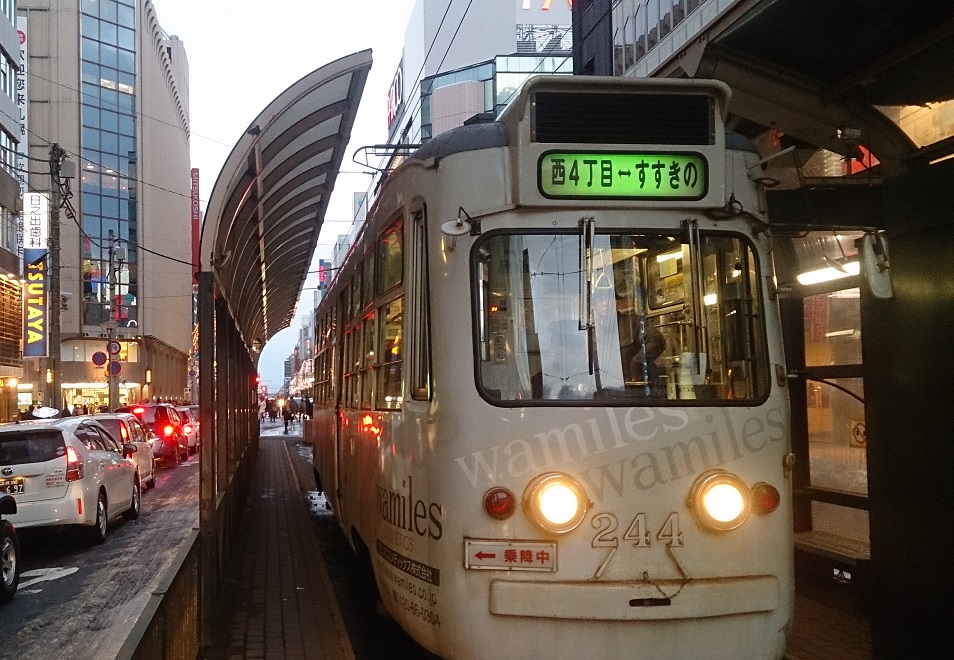When getting public transportations in Japan, IC transportation card is commonly used overall Japanese major cities. An advantage of IC card against single ticket is a simple ticketing system that allow you to keep using same one card as long as top-up on it while single ticket is required to purchase for every single destination. Further more,
IC card is acceptable at almost all subway automatic ticket gates though single ticket buyers need to choose the gates which are available for single ticket at each subway station. Sapica, an IC transportation card especially for Sapporo subway, bus and tram even offers some discount for its use.
Now, let me introduce two popular IC transportation cards used in Sapporo.
Sapica
Price: JPY 2,000 (including JPY 500 of deposit)
Where can you get? –>Subway stations, bus terminals, etc
Where can you use? –>Sapporo subway, Sapporo tram, JR bus*, Chuo bus** and Jotetsu bus(*, **, : Limited in Sapporo city and Sapporo suburbs)
Where can you top-up to the card? –>Subway stations, bus terminals, in the bus and tram, convenience store “Seico mart”, etc
Where can you reimburse the deposit? –>Subway stations, bus terminals, etc
How much is the minimum top-up amount? –>JPY 1,000 after initial ticket purchase of JPY 2,000
Which of the other Japanese cities accept Sapica? –>Sapica can be only used in Sapporo and Sapporo suburbs
More details –>Official website for Sapica (In Japanese)
Kitaca
Price: JPY 2,000 (including JPY 500 of deposit)
Where can you get? –>JR stations in Sapporo and suburbs such as Otaru, Ishikari, Iwamizawa, Tomakomai and new Chitose airport
Where can you use? –>55 stations for JR lines in Sapporo and suburbs such as Otaru, Ishikari, Iwamizawa, Tomakomai and new Chitose airport in addition to available areas of Sapica.
Where can you top-up to the card? –>*JR stations in Sapporo, Otaru, Ishikari, Iwamizawa, Tomakomai and new Chitose airport, *Convenience stores like Seven-eleven, Lawson, Family Mart and Seico mart
Where can you reimburse the deposit? –>Ticket counters of JR stations in Sapporo, Otaru, Ishikari, Iwamizawa, Tomakomai and new Chitose airport
How much is the minimum top-up amount? –>JPY 1,000 after initial ticket purchase of JPY 2,000
Which of the other Japanese cities accept Kitaca? –>Tokyo, Osaka, Nagoya, Fukuoka, Sendai and more
More details –>Official website by JR Hokkaido
Considering above characteristic for each card, the suitable one for you is up to where you go. Kitaca is much useful for people who get JR lines around Sapporo and have opportunities to go cities outside of Hokkaido. On the other hand, Sapica is better for people who mostly move around Sapporo and Sapporo suburbs.
By the way, some IC transportation cards issued at other cities in Japan are also available in Hokkaido. If you have visited in Japan, and got any of below 9 cards before, not necessary to buy neither Kitaka nor Sapica.
IC cards which can be also used in Sapporo
Suica: Mainly used in Tokyo, Sendai and Niigata, etc
Pasmo: Mainly used in Tokyo, etc
Toica: Mainly used in Nagoya, etc
manaca:Mainly used in Nagoya, etc
Icoca: Mainly used in Osaka, Okayama, Hiroshima and etc
PiTaPa:Mainly used in Osaka, Kyoto, Nara, Hyogo and etc
Sugoca: Used in Kyushu area (Fukuoka, Saga, Oita, Kumamoto, Miyazaki, Nagasaki and Kagoshima)
nimoca:Mainly used in Kyushu area such as Fukuoka and Nagasaki, etc.
Hayakaken:Mainly used for subways in Fukuoka.







